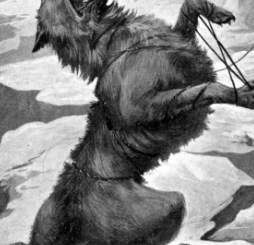How does Odin survive on only wine?
In chapter 38 of the Prose Edda, Gangleri (King Gylfi in disguise) inquires about Odin‘s diet in Valhalla. High, who is providing the answers, explains why Odin does not consume the same meals as the einherjar, the chosen warriors who reside in Valhalla.
High reveals that instead of partaking in the feasts like the warriors, Odin gives the food on his table to his two wolves named Geri and Freki. These wolves are faithful companions of Odin and are often depicted as symbols of his wild and untamed nature.
The figure High further explains that Odin himself does not require regular food to sustain himself. Instead, he gains sustenance from wine as if it were both food and drink.

In Norse mythology, the belief that Odin survives on only wine is connected to his status as a powerful and wise god, as well as the concepts of divine inspiration and sacrifice.
In Norse mythology, wine is associated with the idea of divine inspiration, and its consumption by Odin is linked to his role as the god of wisdom, poetry, and inspiration.
The notion that Odin gains nourishment from wine and does not need to eat regular food sets him apart from the other inhabitants of Valhalla. It reinforces his divine nature and highlights his unique attributes as the chief god in Norse mythology.
This aspect of Odin’s character underlines his role as a complex and enigmatic figure, embodying not only the qualities of a warrior and leader of the einherjar but also the wisdom and divine inspiration that define him as the Allfather (Aldafaðr).
The image of Odin providing his food to his wolves and sustaining himself with wine adds to the mystical and mysterious nature of this prominent deity in Norse mythology.
In the Prose Edda, a book written by Snorri Sturluson, Odin is depicted as consuming only wine and no food. The idea of Odin abstaining from regular food and sustaining himself solely on wine emphasizes his divine nature and unique attributes as the Allfather.
The symbolism behind this belief
For starters, wine in Norse mythology is often associated with inspiration and poetic wisdom. As the god of poetry, Odin gained profound knowledge and insight through the consumption of mead or wine.
Now, it’s important to note that Odin – who has many nicknames, including “Wise One” (Fjǫlnir), “Very Wise” (Fjǫlsviðr), and “Wanderer” (Váfuðr) – went to great lengths to enhance his wisdom.
For example, it is said that he discovered the magical runes after sacrificing himself to himself on Yggdrasil, the cosmic tree, and drinking from the Well of Urd, which is a well of wisdom.
Read More: How and Why Odin Sacrificed His Right Eye
Odin’s choice to consume only wine, an important component of sacrificial rituals, reflects his association with the concept of sacrifice. In Norse culture, sacrifices were made to the gods to gain favor or to gain wisdom and knowledge.
In another popular account of the myth, the chief of the Norse god tricked and deceived the giants who guarded the mead to allow him to drink it and thus gain its benefits.
In the nutshell, by abstaining from food and partaking in wine, Odin might be seen as embodying the act of sacrifice to enhance his divine attributes.

In Norse mythology, Odin is known for, among other things, his relentless pursuit of wisdom. The Allfather (Alfǫðr) is said to have sacrificed himself to himself by hanging upside down on the world-tree Yggdrasil for nine days and nights | Odin sacrificing himself upon Yggdrasil as depicted by Danish artist Lorenz Frølich, 1895
Where does the mead in Valhalla come from?
Odin is often depicted as a god with mysterious and supernatural qualities. His ability to subsist solely on wine reinforces his role as a powerful and enigmatic figure beyond mortal limitations.
The million dollar question is: Where does all the mead in Valhalla come from?
According to the myths, the mead comes from a magical goat called Heiðrún. In both the Prose Edda and the Poetic Edda, the creature, which leaves on the roof of Valhalla, is said to feed on the foliage of the tree Læraðr, which in turn is associated with Yggdrasil (i.e. the World Tree).

Mead from the udders of the magical goat Heiðrún in Norse mythology
As Heiðrún eats, mead flows from her udders, providing an endless supply for the slain warriors (einherjar) who feast in Valhalla.
This mead is often described as being incredibly potent and delicious, enough to keep the einherjar in high spirits as they spend their days fighting and their nights feasting.
The magical nature of Heiðrún, her endless production of mead, and the einherjar’s eternal revelry represent the Norse ideal of a glorious afterlife for valiant warriors.
Read More: Mead of Poetry in Norse Mythology

Conclusion
Myths and legends often employ symbolism to convey deeper meanings. The notion that Odin survives on wine might serve to illustrate his role as a wise and mystical figure, and to reinforce his position as a deity with unique powers.
It is essential to remember that Norse mythology contains multiple variations of stories and interpretations, and the specifics of Odin’s character and attributes might differ between sources. As with many aspects of mythology, different narratives may coexist, each contributing to the complexity and richness of the belief system.



























